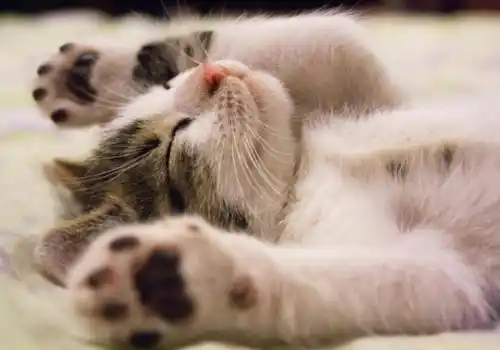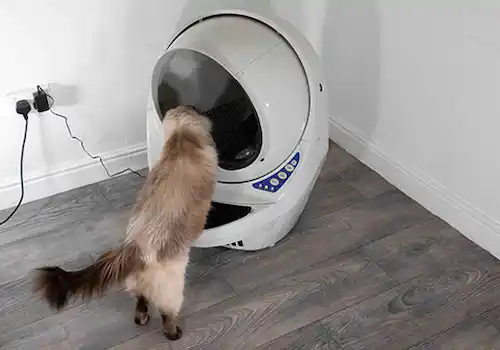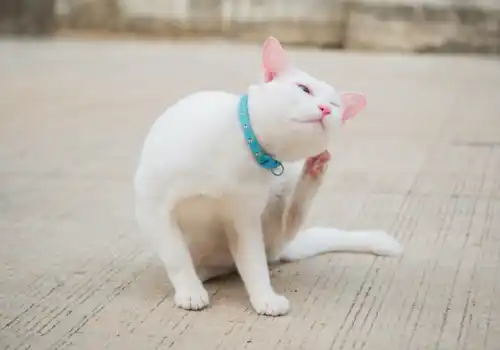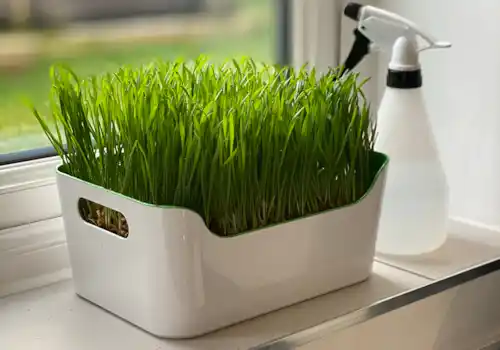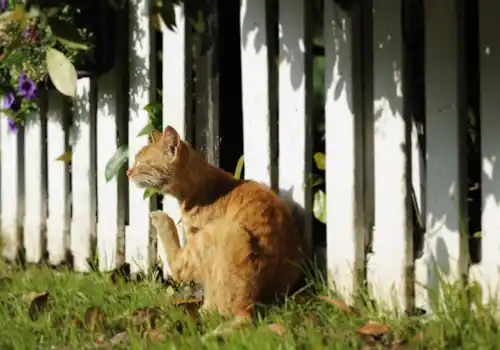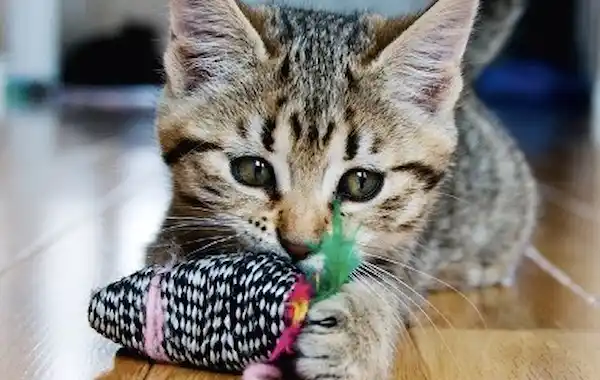Clare Hemington explains how play forms a key part of kittenhood…
Who doesn’t love to watch a kitten playing? All that mischief and cuteness in one tiny furry bundle. However, play isn’t something that kittens do just for the fun of it, it is an incredibly important part of your kitten’s development. In this article we’ll be exploring the different stages of play that kittens engage in and what they represent.
We’ll also look at the best way to play with a kitten, what you should avoid, and how you can redirect any playfulness targeted at your curtains or other items of household furniture!
Types of play
There are three specific types of play that kittens learn to use at different stages during their development, let’s take a look at these:
● Locomotor Play — locomotor movements start when the kittens are in the womb and continue to develop once the kittens are born. Locomotor play is what helps kittens increase their strength, stamina, and flexibility, and consists of all those endearing movements you see them make such as jumping on things, those funny side-ways dances, rushing up and down, and starting to climb. These are all performed to help kittens perfect their coordination which means they can start to explore their environment and investigate the world around them. By the time kittens reach the age of between 10 — 12 weeks old, their locomotor play behaviour is fully developed.
● Social Play — by around two or three weeks old, kittens’ motor skills have developed sufficiently to start playing socially with their littermates. This involves chasing and charging at each other and jumping on an unsuspecting sibling when he so much as twitches his tail! As kittens age, this play may become rougher and more intense. Behaviours that you might see include wrestling, pinning littermates down, and raking them with their back legs. If a kitten has no littermates, this type of play will be directed at his long-suffering mum. Although described as ‘social’, it is more likely that this type of play is a way for kittens to start developing their hunting skills, using their siblings as target practice.
● Object Play — by four weeks old, using locomotor and social play, the kittens have learned how to make complex movements. It is at this stage that the weaning process starts and, in the natural world, when their mums bring prey back to the nest. This gives the kittens the opportunity to develop their eye-paw coordination, balance, and agility. Importantly, it allows them to practice the behavioural sequences associated with hunting, in other words stalking, chasing, and pouncing on moving objects, then handling the object and manipulating it. Where prey isn’t available, anything that moves is fair game, including us!
Play time
Now you can see why play is such an important part of kitten development and why you should play with your kittens as much as you possibly can. But what type of toys should you be giving your kitten to play with? Variety is important and you’ll find no shortage of that in the shops these days. Anything that can be chased, pounced on, swatted, clawed at, or chewed is like manna from heaven as far as a kitten is concerned.
If you really want to wear your kitten out, you could try the fishing rod type toys that have a length of cord attached to a plastic wand, with feathers on the end of the cord. I often recommend these as they can be more easily manipulated in a way that replicates natural prey. They are also useful for anxious kittens, as they allow you to play with them at a distance. Toys stuffed with catnip, valerian, silvervine, or honeysuckle wood will introduce your kitten to some lovely (or not in the case of valerian!) scents, and small fleecy or furry toys that look like prey are always popular, as long as the toys are not so small that they can be swallowed.
And if your kitten has you running around to the point of exhaustion, there are plenty of battery-operated toys now available. Of course, toys don’t have to be bought, the beauty of kittens is that they’ll play with just about anything, from a ping pong ball or scrunched up pieces of paper, to a shoelace with a feather tied on to the end. And, as you all know, there’s no better toy than a cardboard box or paper bag (handles removed), especially if it contains a surprise toy or treat.
A word of warning — never leave your kitten alone with any toy that he could get caught up in. I’ve heard some terrible stories about kittens that have been left unattended with fishing rod toys or bits of string.
Setting a good example
While the benefits of play and exploration cannot be overemphasised, it’s important to set some ground rules in terms of what’s acceptable and what’s not. You should apply these from the word go and stick to them consistently. For example, if you don’t want an adult cat’s bottom regularly planted on your counter-top, don’t allow him up there as a kitten.
If you don’t want to be woken up at 4am by a noisy and rambunctious cat, you’d best not allow him into your bedroom overnight as a kitten. I personally need a good eight hours of sleep so have always practiced this, even though I find it heartwrenching to leave kittens overnight to start with. And if you regularly allow your kitten to playfully nip your leg in passing, he won’t know that it’s a behaviour that he shouldn’t be performing.
Likewise, if you play with your kitten with your hand, what you are doing is teaching him that your hand is prey to be pounced on and bitten. While his teeth may feel like no more than a pin prick when your kitten is tiny, when he’s a fully grown cat it’ll be a different story.
Avoiding unwanted behaviours
Cat chew toys and larger toys, like cat play kickers or anything that he can safely shred, can be a good alternative to your limbs. On the subject of behaviours that you’d prefer your kitten not to perform, rather than giving him carte blanche access to the curtains for climbing practice, you should provide an alternative in the form of a cat climbing frame with perches. This will not only give him opportunities to scratch and climb, but to rest and relax up high where he feels safe and can look out.
It’s also a good idea to temporarily raise and tie up any floor length curtains to remove the possibility of a curtain climbing habit developing. Shelves and windowsills also make great perches for kittens, but do make sure that precious ornaments are put away until he’s all grown up and better behaved.
Leaving your kitten alone
If you have to leave your kitten on his own for any period of time, it’s important to ensure that the room in which he is kept is kitten-proofed. This means removing any household object that could be chewed, batted, and sent flying, and putting child locks on cupboard doors. Also remove all plants and block up any holes into which he could squeeze and lose himself. Only last week, I was told about a kitten that had decided to explore the floor cavity of his home while a new floor was being laid.
You can probably guess what happened next. The kitten ended up with the flooring installed over him! Fortunately, the owners quickly realised what had happened and he came to no harm. When the room has been made safe, the kitten can be left with some comfy bedding, a litter tray, food and water, a scratching post, some perches that he can climb up to, and some toys that are safe for him to play with solo. By the time your kitten reaches 21 weeks old, playing with non-moving objects plateaus and then gradually decreases during the course of his life.
However, as you know, cats enjoy playing with moving objects into adulthood and even when they are senior citizens. It’s just one of the things about them that we love.
Did you know?
- Blue Cross recommends a few short play sessions with your kitten each day.
- Playing with your kitten just before bed time will help to tire them out for the night.

